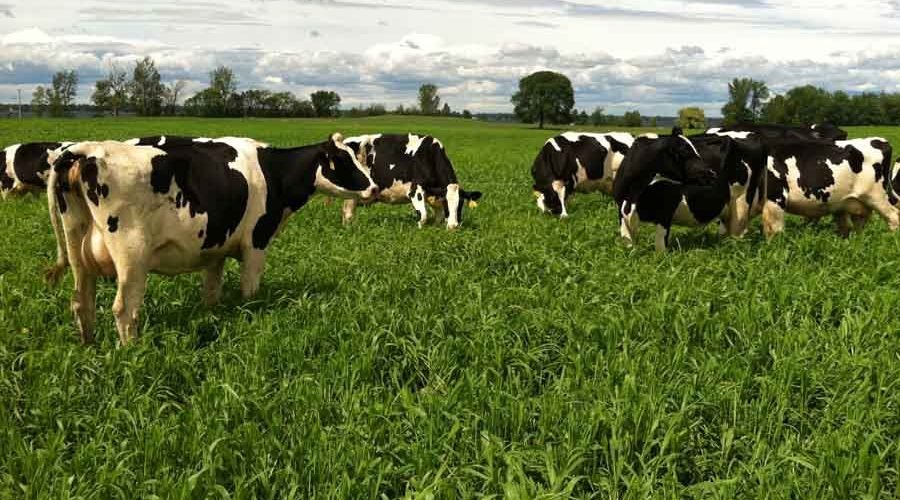Effective pasture management is a crucial aspect of cattle farming, as it directly impacts the health, productivity, and profitability of the farm. It involves planning, developing, and maintaining a grazing system that provides a consistent supply of high-quality forage to meet the nutritional needs of cattle while preserving and enhancing the productivity and sustainability of the land.
The benefits of effective pasture management are numerous, including providing high-quality forage to meet cattle’s nutritional needs, enhancing animal health and productivity, increasing the carrying capacity of the land, improving soil health and fertility, and reducing environmental impacts.
Now, let’s take a look at some tips for effective pasture management in cattle farming.
Table of Contents
Tip #1: Determine the Carrying Capacity of the Land
The carrying capacity of the land refers to the number of animals that can be sustained on a given area of pasture without degrading its productivity or ecological integrity. It depends on several factors, including soil type, topography, climate, vegetation, and management practices.
To determine the carrying capacity of your land, you can use a range of methods, including soil tests, forage tests, monitoring the growth and health of the vegetation over time, and conducting grazing trials. Knowing the carrying capacity of your land can help you avoid overgrazing, which can lead to soil compaction, erosion, and reduced forage quality, as well as underutilization, which can lead to weeds and other undesirable vegetation taking over.
Tip #2: Use Rotational Grazing
Rotational grazing is a grazing system that involves dividing the pasture into smaller paddocks and rotating the animals among them at regular intervals. This allows the vegetation to rest and regrow between grazings, which improves its quality and quantity and enhances soil health.
Rotational grazing offers several benefits, such as better forage utilization and distribution, reduced soil compaction and erosion, improved animal health and productivity, and a reduced need for supplemental feed and fertilizers.
To implement rotational grazing, you’ll need enough paddocks to accommodate the number of animals you have, and you’ll need to adjust the grazing interval and stocking density based on the carrying capacity of the land and the growth rate of the vegetation.
Tip #3: Manage Weeds and Other Undesirable Vegetation
Weeds and other undesirable vegetation can reduce the quality and quantity of forage available to cattle and compete with desirable plants for nutrients and sunlight. Some common weeds in pastures include thistles, ragweed, and burdock.
To manage weeds and other undesirable vegetation, you can use a range of methods, such as mechanical control (mowing or tillage), chemical control (herbicides), and biological control (introducing grazing animals that prefer the weeds).
It’s essential to select the appropriate control method based on the type and severity of the weed problem and to follow label instructions and safety guidelines when using herbicides or other chemicals.
Tip #4: Implement Soil Conservation Practices
Soil conservation practices, such as planting cover crops, reducing tillage, and avoiding overgrazing, can help improve soil health and fertility, reduce erosion, and increase the capacity of the land to support vegetation and livestock.
Cover crops, such as legumes, can help fix nitrogen in the soil, reduce weed pressure, and provide additional forage for cattle. Reducing tillage can help improve soil structure and organic matter content, while avoiding overgrazing can prevent soil compaction and erosion.
Tip #5: Provide Clean Water and Shade
Cattle require access to clean water and shade to maintain their health and productivity, particularly during hot and dry periods. Providing adequate water sources, such as ponds or tanks, and shade structures, such as trees or shelters, can help reduce stress, heat stroke, and other health problems in cattle.
Tip #6: Monitor and Evaluate Your Pasture Management Practices
Regular monitoring and evaluation of your pasture management practices can help you identify areas for improvement, adjust your strategies, and make informed decisions about your grazing system. Some key metrics to track include forage productivity, animal performance, soil health, and environmental impacts.
You can use a range of tools and methods to monitor and evaluate your pasture management practices, such as soil tests, forage tests, pasture walks, cattle gate, and grazing charts. By keeping track of these metrics and making adjustments as needed, you can optimize the productivity, profitability, and sustainability of your cattle farm.
Effective pasture management is critical for the success of cattle farming, and implementing the tips discussed in this article can help enhance the productivity, profitability, and sustainability of your farm. By determining the carrying capacity of your land, using rotational grazing, managing weeds and other undesirable vegetation, implementing soil conservation practices, providing clean water and shade, and monitoring and evaluating your pasture management practices, you can provide high-quality forage to your cattle, improve soil health, reduce environmental impacts, and ensure the health and productivity of your livestock. By taking a proactive and holistic approach to pasture management, you can optimize the performance of your farm and contribute to a more sustainable and resilient food system.





